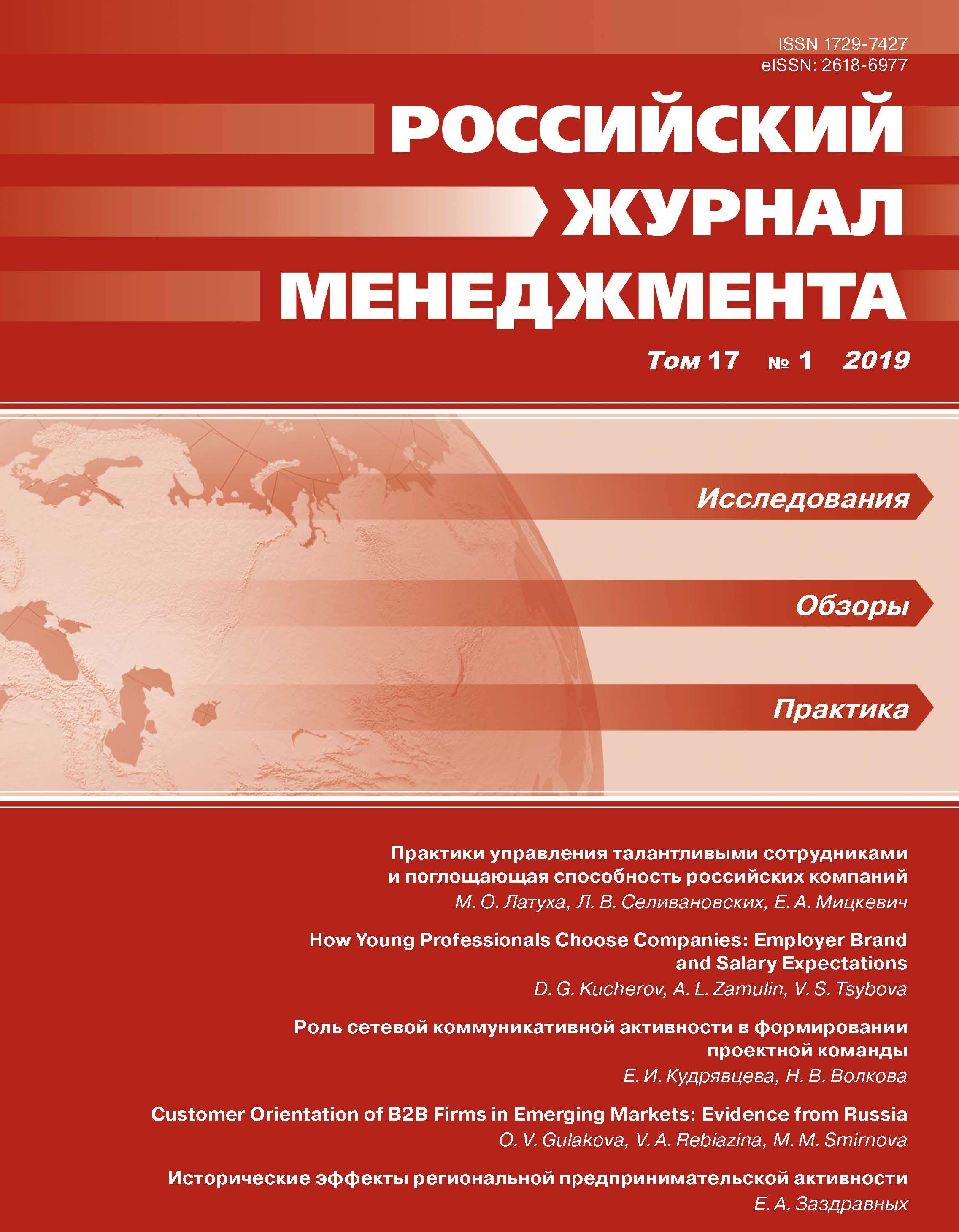Исторические эффекты региональной предпринимательской активности
DOI:
https://doi.org/10.21638/spbu18.2019.105Аннотация
Предпринимательская активность может существенно различаться между регионами. Примеры стран, которые не проходили через опыт социалистической экономики, демонстрируют, что пространственные различия сохраняются в течение длительного времени. Однако не до конца ясно, наблюдаются ли такие же эффекты в странах с переходной экономикой. В статье приводится оценка того, как взаимосвязана предпринимательская активность в регионах России конца 1980-х гг. и наших дней. Для этого используется статистика доли работающих не по найму в экономически активном населении за 2010-2016 годы, которая может точнее измерять вовлеченность населения в предпринимательство по регионам России по сравнению с традиционными подходами, основанными на измерении численности субъектов малого и среднего предпринимательства. В данной работе проверяется, могут ли пространственные различия в уровне предпринимательства объясняться уровнем предпринимательской активности в первые годы перестройки, которая является официально зарегистрированной или теневой. Результаты исследования демонстрируют, что в субъектах, 30 лет назад характеризовавшихся высоким уровнем предпринимательской активности в теневом и официальном секторах, в наши дни сохраняется большая доля предпринимателей, несмотря на значительные структурные изменения в экономике. Выявлено, что межрегиональные различия в предпринимательской активности устойчивы к различным шокам и сохраняются длительное время и в странах с развивающейся экономикой.
Ключевые слова:
предпринимательство, предпринимательская активность, региональное предпринимательство, межрегиональные различия, исторические эффекты
Скачивания
Библиографические ссылки
REFERENCES IN LATIN ALPHABET
Translation of references in Russian into English
Загрузки
Опубликован
Как цитировать
Выпуск
Раздел
Лицензия
Статьи журнала «Российский журнал менеджмента» находятся в открытом доступе и распространяются в соответствии с условиями Лицензионного Договора с Санкт-Петербургским государственным университетом, который бесплатно предоставляет авторам неограниченное распространение и самостоятельное архивирование.





